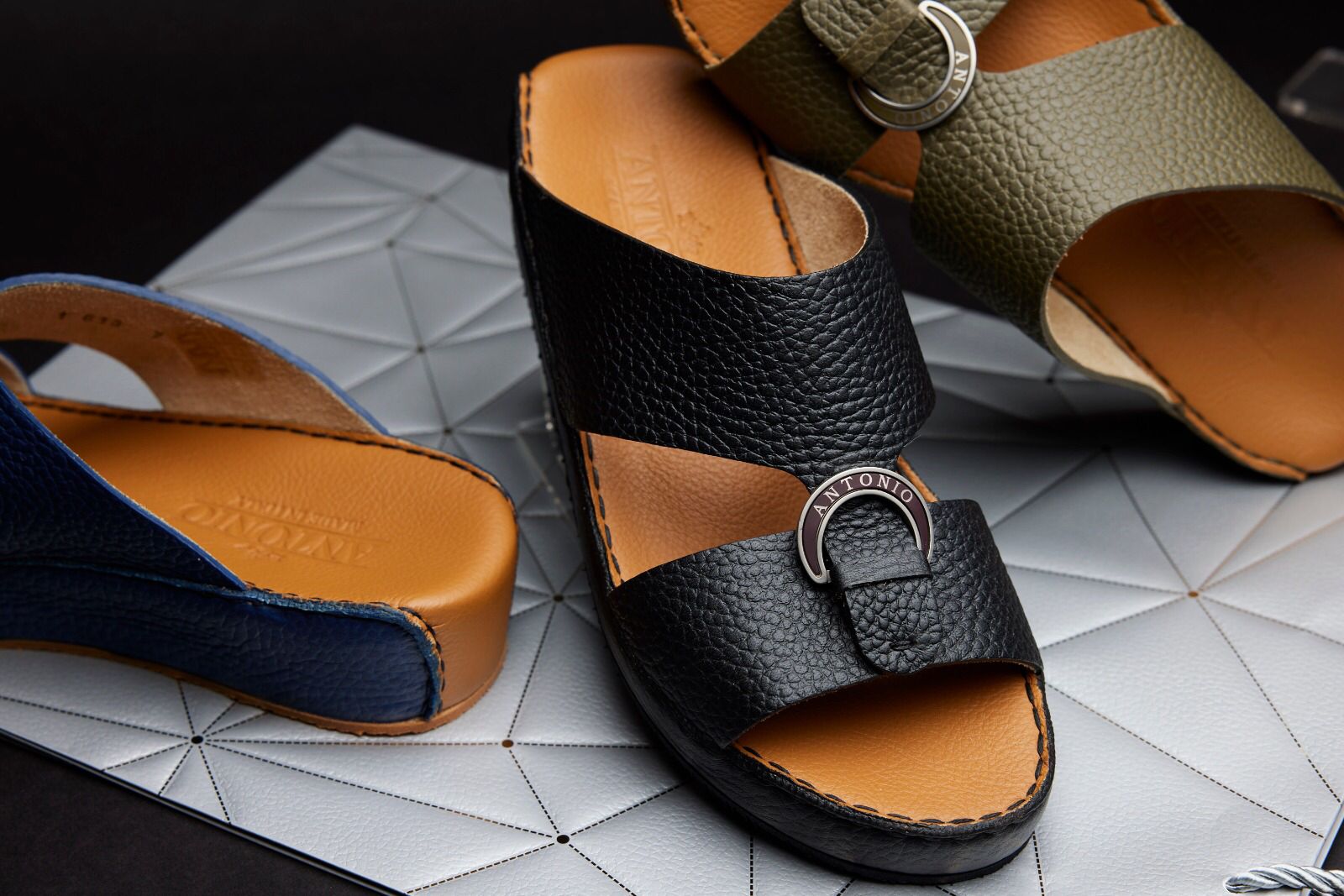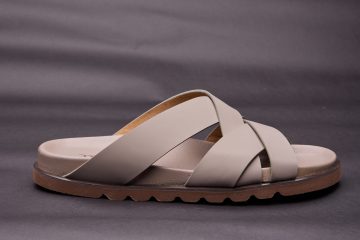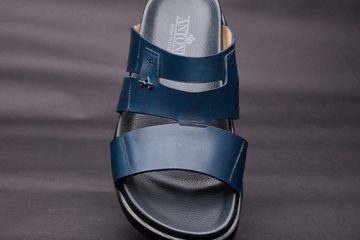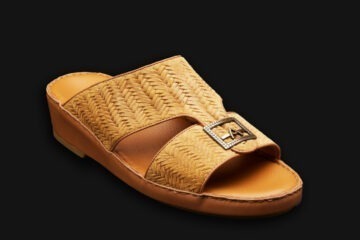When it comes to footwear, sandals are the go-to choice for warm weather, providing comfort, style, and a sense of freedom. However, choosing between leather sandals and synthetic alternatives can be a challenge. Both materials come with their advantages, but when you want sandals that are built to last, offer exceptional comfort, and exude timeless style, leather stands out.
At Antonio Geneve, we specialize in premium leather sandals that are not only designed for durability but also crafted with care to provide you with the ultimate comfort. This blog will explore the key differences between leather and synthetic sandals, helping you make an informed decision and understand why leather sandals are the better option for many.
Understanding Leather Sandals vs. Synthetic Sandals
Before diving into the details, let’s break down what differentiates leather sandals from synthetic ones. In general, leather sandals are made from animal hides, typically cowhide, which are treated and processed to create a strong, durable, and flexible material. On the other hand, synthetic sandals are often made from plastic-based materials like PVC (Polyvinyl chloride), EVA (Ethylene-Vinyl Acetate), or PU (Polyurethane), designed to mimic the look and feel of leather.
Below is a quick comparison to highlight the main differences:
| Feature | Leather Sandals | Synthetic Sandals |
|---|---|---|
| Material | Made from natural animal hides | Made from synthetic materials like PVC, EVA, PU |
| Durability | Extremely durable, improves with age | Less durable, can degrade over time |
| Comfort | Molds to your feet over time for a custom fit | Initially comfortable but may lack long-term support |
| Breathability | Highly breathable, reducing sweat and odors | Less breathable, can lead to discomfort |
| Sustainability | Biodegradable, environmentally friendly | Made from petroleum-based products, not biodegradable |
| Maintenance | Requires minimal care, can be repaired | Hard to repair, often needs replacing |
| Price | Higher upfront cost but offers long-term value | Generally cheaper but needs frequent replacement |
Why Choose Leather Sandals Over Synthetic Sandals?
Leather sandals have been a favorite for centuries, and for good reason. Below are some of the reasons why leather sandals are the superior choice compared to their synthetic counterparts.
1. Durability: Built to Last
One of the biggest selling points of leather sandals is their exceptional durability. Leather is a strong and long-lasting material, resistant to damage from everyday wear and tear. Over time, leather sandals become even more comfortable as they mold to the shape of your foot, creating a personalized fit that improves with each wear.
In contrast, synthetic sandals, while initially light and flexible, degrade much quicker. The materials used in synthetic sandals—especially cheap plastics—tend to crack, peel, and discolor after a few months of use. This can lead to a much shorter lifespan for synthetic sandals, making them a less sustainable option in the long run.
2. Comfort: The Leather Advantage
Leather sandals offer an unmatched level of comfort. Leather is a natural material that has the ability to stretch and mold to the shape of your foot over time. This means that your leather sandals will only get better with age, offering a customized fit that’s hard to beat.
On the other hand, synthetic sandals, while comfortable at first, often lack the breathability and flexibility that leather provides. They can cause discomfort, especially when worn for long periods of time, as they don’t adapt to the shape of your feet in the same way leather does.
3. Breathability: Leather's Natural Advantage
Leather is a naturally breathable material. This means that air can circulate through the sandals, preventing your feet from becoming too sweaty or uncomfortable in warm weather. Leather sandals are especially beneficial for people who spend a lot of time outdoors or on their feet, as they reduce the chances of foot odor and sweat buildup.
Synthetic sandals, on the other hand, are often made from plastic-based materials that trap moisture and heat. This lack of ventilation can lead to sweaty, uncomfortable feet, especially during long walks or hot summer days.
4. Sustainability: Leather Is the Eco-Friendly Choice
As sustainability becomes an increasingly important factor in purchasing decisions, leather sandals offer a clear advantage over synthetic ones. When sourced responsibly, leather is a biodegradable material, meaning it naturally decomposes over time without harming the environment.
On the other hand, synthetic materials such as PVC and EVA are made from petroleum-based chemicals, which are not biodegradable. These materials can take hundreds of years to break down, contributing to long-term environmental pollution.
At Antonio Geneve, we prioritize sustainability by using high-quality, ethically sourced leather for our sandals, ensuring that our products not only look great but also have a minimal impact on the environment.
5. Maintenance: Easy Care for Leather Sandals
Leather sandals are relatively easy to maintain. With just a little care, they can last for many years. Regular cleaning, conditioning, and occasional waterproofing are all that’s needed to keep your leather sandals looking great. Over time, leather develops a beautiful patina, becoming more unique and attractive with age.
In contrast, synthetic sandals are often harder to maintain. While they might look pristine when new, synthetic sandals tend to fade, crack, and lose their appeal quickly. Furthermore, if they get damaged, they are usually difficult to repair. This means you may have to replace synthetic sandals more often, resulting in higher long-term costs.
6. Style and Versatility: Timeless Elegance with Leather
When it comes to style, leather sandals have a timeless appeal that synthetic sandals simply cannot match. The rich, natural look of leather adds sophistication and elegance to any outfit. Whether you’re wearing them casually with shorts or dressing them up with a summer dress, leather sandals are versatile enough to complement a wide range of looks.
Synthetic sandals, while available in various designs and colors, often have an artificial look. Many synthetic materials lack the depth and character that leather provides. Leather sandals also age beautifully, developing a unique patina over time that adds to their appeal.
7. Price: Long-Term Value of Leather
While leather sandals may come with a higher price tag initially, their long-lasting nature makes them a far better investment in the long term. Synthetic sandals may cost less upfront, but their shorter lifespan means you will have to replace them more often, ultimately costing more over time.
At Antonio Geneve, we offer premium leather sandals that combine luxury and affordability. Our sandals are built to last, giving you the best value for your money.
How to Choose the Best Leather Sandals?
If you’re convinced that leather sandals are the right choice for you, here are some factors to consider when selecting your perfect pair:
- Fit: Ensure the sandals are the right size and fit comfortably. Leather sandals will mold to your feet, but they should still feel comfortable right out of the box.
- Style: Leather sandals come in a variety of styles, from casual slip-ons to more formal strapped designs. Choose a pair that fits your lifestyle and preferences.
- Quality: Not all leather sandals are created equal. Look for high-quality, ethically sourced leather that will last longer and age beautifully.
- Price: While leather sandals may cost more upfront, the investment is worth it. Look for a pair that offers both value and durability.
Conclusion: Leather Sandals Are the Superior Choice
When comparing leather sandals to synthetic alternatives, the benefits of leather are clear. Leather sandals are more durable, comfortable, breathable, sustainable, and versatile. While synthetic sandals may seem like a cheaper option initially, they often require frequent replacements and lack the long-lasting qualities of leather.





